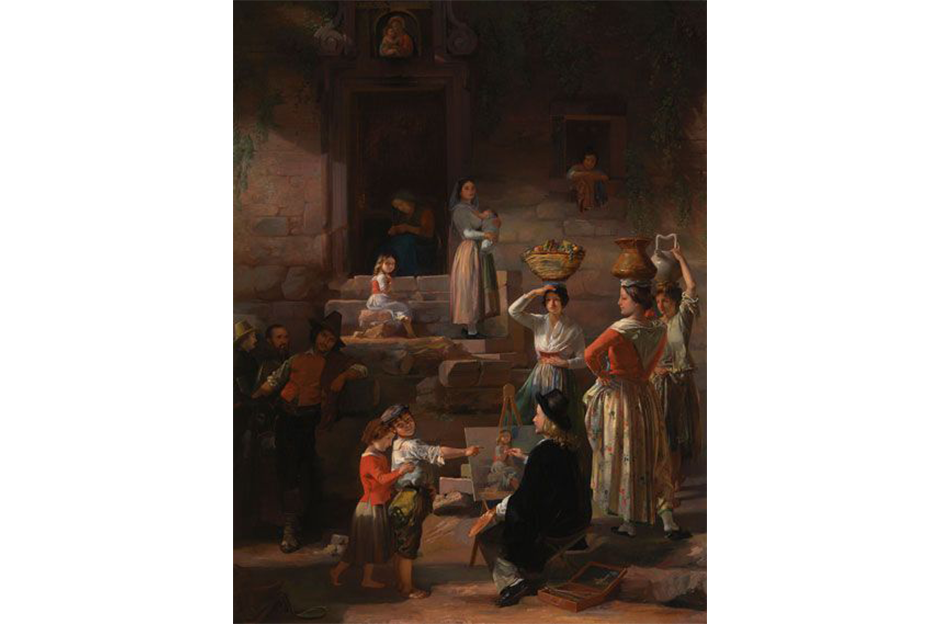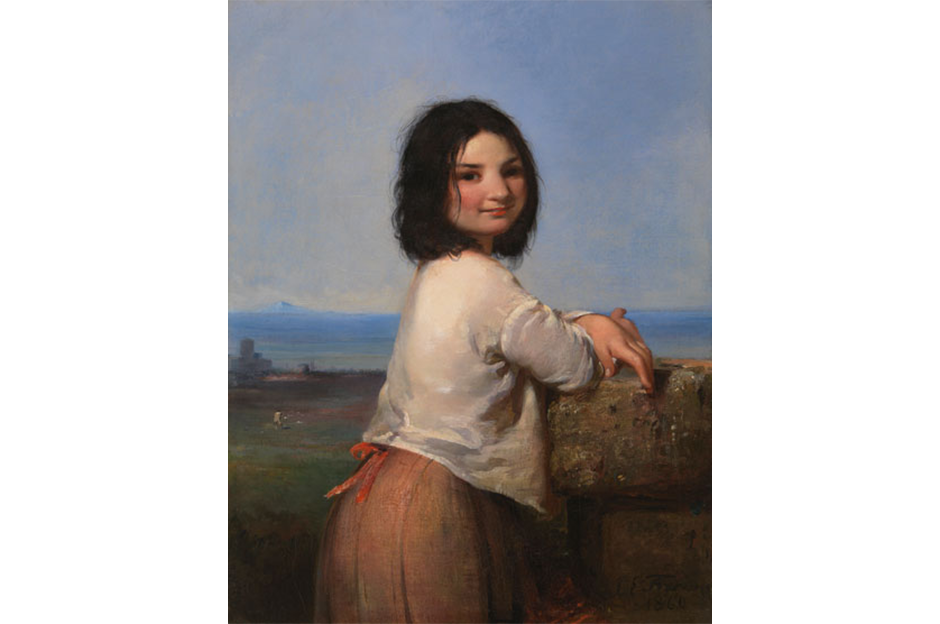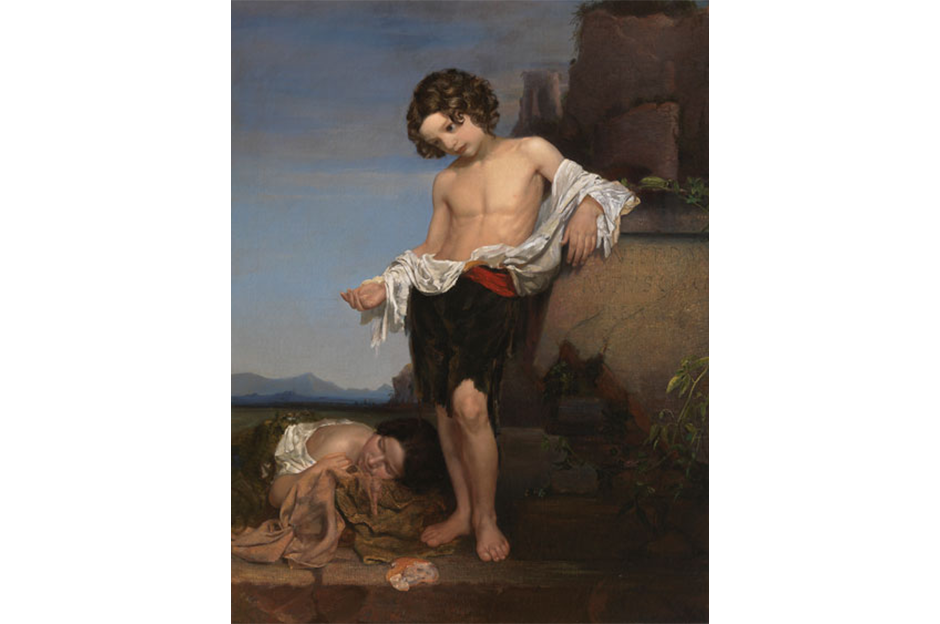The exhibition, James E. Freeman 18081884: An American Painter in Italy, opens Sunday, September 13 in the Museum of Art. This first-ever retrospective of the fancy pictures and portraiture of an artist who began his career in central New York State and went on to become a leading figure of the American expatriate community in Rome is comprised of 20 artworks spanning his career from 1835 to 1871. The exhibition will remain on view through January 17, 2010.
Independent art historians John F. McGuigan Jr. and Mary K. McGuigan are the exhibition's guest curators and authors of the accompanying catalog. The extensive primary research they incorporated into the insightful and informative 168-page exhibition catalog, which includes two appendices (a chronology of Freeman's life and his American exhibition record with contemporary critical reviews), make it a welcome addition to the literature on the great era of the 19th-century American grand tour as well as the history of figural art in America. Copies of the exhibition catalog are available for sale for $49.95 in the Gift Gallery.
Freeman's origins are in central New York State where he began as an academically trained painter of bespoke portraits and the occasional fancy picture. He first traveled to Italy in 1836 and remained a fixture of the vibrant art scene there until his death in Rome in 1884. During that time he forged a unique career centered on painting engaging fancy pictures of humble Italian peasants for an international clientele. These sentimental character studies of impish street urchins, beatific mothers with children, and blind beggars were appealing for their artless beauty, an ideal closely allied to the 18th-century cult of sensibility, which encouraged its adherents to respond viscerally to strong visual and literary stimuli, thereby engendering greater compassion and more ethical behavior. Freeman's dedication to the communicative potential of the fancy picture resulted in a remarkably cohesive oeuvre that constitutes his lasting legacy to American art.
The exhibition catalog reconstructs the arc of Freeman's multifarious life, his two volumes of memoirs (1877 and 1883) and pioneering book of photographs of his art (1870) are discussed as they inform our understanding of his artistic career. Moreover, the fascinating, little-known details of Freeman's consulship to the Papal States during the tumultuous years of the Risorgimento, Italy's protracted struggle for independence and national unification, are explored. Freemans passionately held political beliefs and his active participation in the historic events of the Roman Republic of 1849 also influenced his choice of subjects for his paintings and his allegiance to the fancy picture format.
As current scholarship re-evaluates the cult of sensibility, sentimentalism, and their attendant visual counterparts, and considers how they functioned within the broader framework of the Enlightenment, this unprecedented assessment of Freemans' art and life is especially timely and relevant. The rhetorical purpose of Freemans' fancy pictures in instilling a universal moral code of conduct not predicated on a single religion or a common heritage, but based on empathy and self-determination was as valid in Jacksonian America as it was in Italy during the Risorgimento. This examination of Freemans' paintings and their literary and historical sources addresses the important role assigned to the fancy picture as a vehicle for social and political change in an international arena.
In addition to introducing the Munson-Williams-Proctor Arts Institute Museum of Arts local audience to an artist who began his career in central New York State, this project represents the first modern appraisal of a figure painter who was lauded by Henry T. Tuckerman in his seminal Book of the Artists (1867) but was subsequently lost to history. The scope of this exhibition reveals Freeman's uncanny ability to capture the character of his sitters, whether an American titan of commerce or an anonymous young contadina from the Italian hills.
Works in the exhibition come from several private lenders as well as the following public collections: Albany Institute of History & Art, Albany, N.Y.; Cornell Fine Arts Museum, Rollins College, Winter Park, Fla.; The Hamilton Club, Hamilton, Ontario; Memorial Art Gallery of the University of Rochester, Rochester, N.Y.; The Metropolitan Museum of Art, N.Y.; Munson-Williams-Proctor Arts Institute Museum of Art; The New-York Historical Society, N.Y.; Seward House, Auburn, N.Y.; Wells College, Aurora, N.Y.; and the Smithsonian American Art Museum, Washington, DC.







